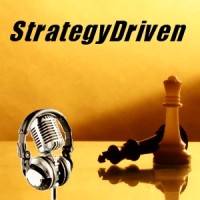How to Lead An Online Business
First and foremost, find an idea you love.
Whether it’s ice cream, bean bags, or shirts with funny slogans, find a product or service you’re passionate about selling. I started my career as a marketing executive. One day, I was invited to dinner with Japanese business associates. The dinner was a great success, and afterwards we moved to a Japanese tea house where, following tradition, everyone removed their shoes. I looked down, and I had two different socks on – one with a hole in the big toe. I sat cross-legged for an entire evening, trying to hide my foot. I’m passionate about helping executives avoid such embarrassments by allowing them to buy fine-quality essentials in one convenient place online, and have them delivered to their doorstep. Because wouldn’t it be wonderful if your sock drawer could replenish itself?
Hi there! This article is available for free. Login or register as a StrategyDriven Personal Business Advisor Self-Guided Client by:
Subscribing to the Self Guided Program - It's Free!
About the Author


 Every problem possesses unique nuanced qualities and it is often these minor details that renders a decision a striking success, a monumental failure, or, most frequently, simply average. Those who recognize these details can exploit them to their organization’s advantage.
Every problem possesses unique nuanced qualities and it is often these minor details that renders a decision a striking success, a monumental failure, or, most frequently, simply average. Those who recognize these details can exploit them to their organization’s advantage. David Parmenter, author of
David Parmenter, author of  StrategyDriven Podcasts focus on the tools and techniques executives and managers can use to improve their organization’s alignment and accountability to ultimately achieve superior results. These podcasts elaborate on the best practice and warning flag articles on the StrategyDriven website.
StrategyDriven Podcasts focus on the tools and techniques executives and managers can use to improve their organization’s alignment and accountability to ultimately achieve superior results. These podcasts elaborate on the best practice and warning flag articles on the StrategyDriven website.
 Michael Lee Stallard, author of
Michael Lee Stallard, author of 